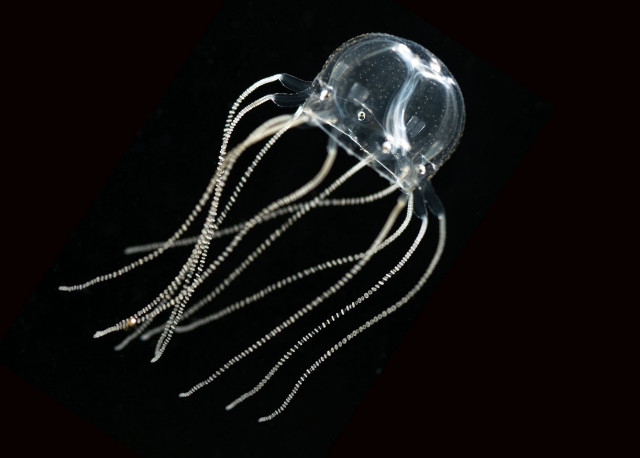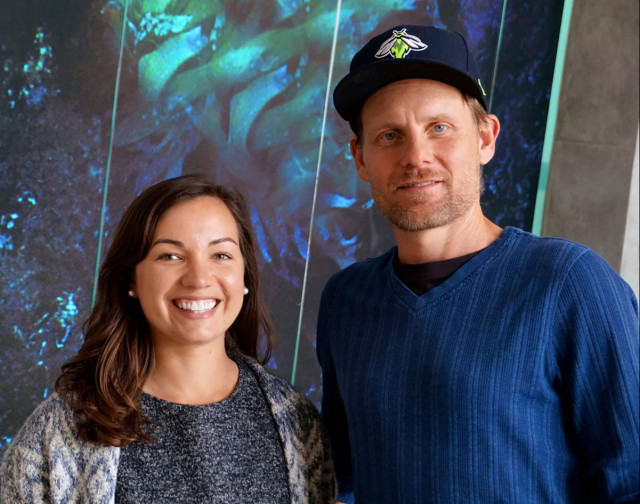Without Batting an Eye

By Julie Cohen
UCSB researchers find that eyes originated in jellyfish at least eight separate times, helping to illuminate how evolution produces complex visual organs
Eyes detect light and convert it into electrochemical impulses in neurons. The process is the precursor to vision in complex beings. Yet some simple organisms, such as jellyfish (cnidarians), also have many types of eyes that use the same photoreceptive proteins, called opsins, as animals like flies and humans.
Seeking to understand how many times jellyfish eyes originated during their evolution, UC Santa Barbara evolutionary biologist Todd Oakley and a team of his students compiled a large genetic data set from which they inferred relationships among cnidarian species. By creating a tree that delineated those relationships, the researchers were able to determine that eyes originated at least eight separate times within this group. The team’s findings appear in the journal Current Biology.
“Eyes are one of the most complicated organs that scientists study,” explained co-author Oakley, a professor in UCSB’s Department of Ecology, Evolution, and Marine Biology. “Other animals with complicated nervous systems evolved eyes more than once. Cnidarians have much less complicated nervous systems, so it was surprising to find that eyes have evolved so many times within this phylum.”

The investigators coupled their genetic data with an extensive literature search to tease out the historical expression of photoreceptive opsin proteins in cnidarians. In previous research, Oakley’s lab found that opsins are used outside of eyes in cnidarians to trigger the firing of stinging cells called cnidocytes. The new study showed that not only was there widespread light-sensing behavior in eyeless jellyfish, but that complex, lensed eyes in this group had a separate history from other eye types.
“With the number of species we included in our cnidarian tree of life, it is now possible to see that eyes originated many times,” said lead author Natasha Picciani, a graduate student in the Oakley Evolution Lab. “The morphological details and opsin proteins are different, which supports the idea that those eyes evolved independently. Our study demonstrates that simple building blocks can be used to build complex things in different ways.”
These findings demonstrate the concept of convergent evolution — the independent origin of similar features in species of different lineages. Convergent evolution — which also occurs in plants — creates analogous structures with similar form or function that were not present in the last common ancestor of the group.
“Now that we know where these eye origins occur in the cnidarian family tree, which lineages possess eyes and whether those eyes belong to the same or different origins, we know where to expect to find more differences in future research,” Picciani noted. “When we conduct more detailed morphological studies, we’ll know which species to target to make appropriate comparisons.”
UCSB co-authors are Jamie Kerlin, Noemie Sierra, Andrew Swafford, Desmond Ramirez, Nickellaus Roberts and Johanna Cannon. Marymegan Daly from The Ohio State University is also a co-author.
This work was supported by a grant from the National Science Foundation to the Oakley Evolution Lab and through funding from a doctoral scholarship to Picciani from Scientists Without Borders.